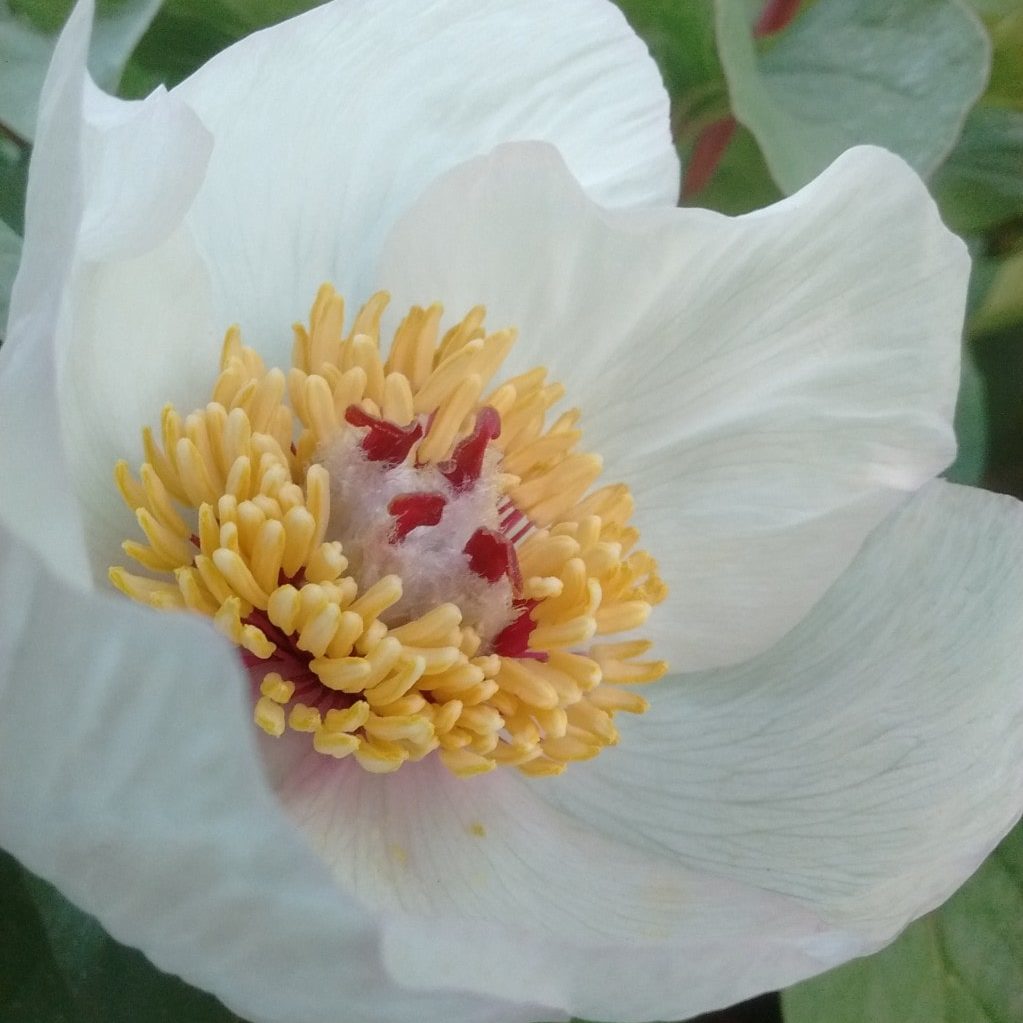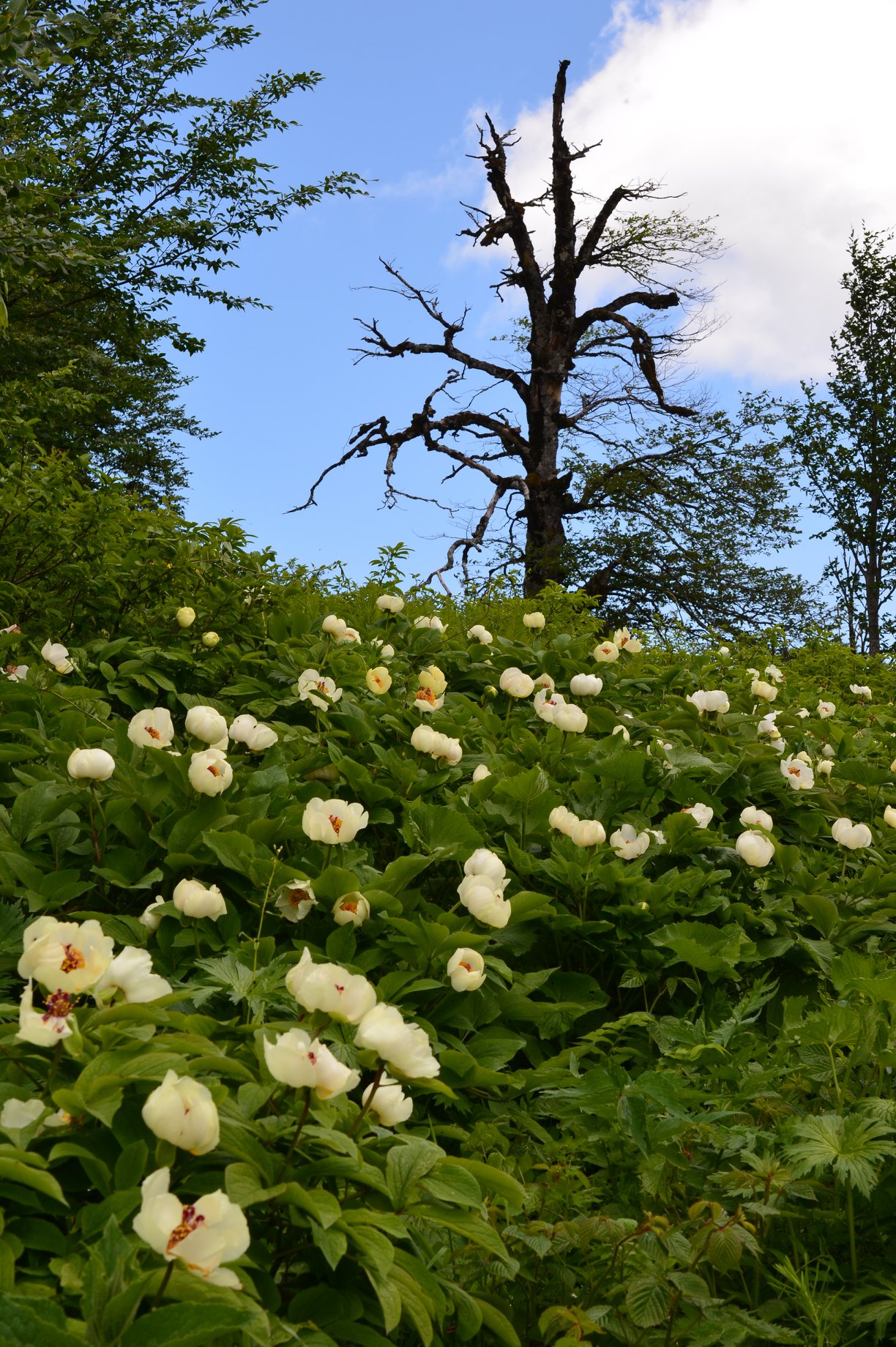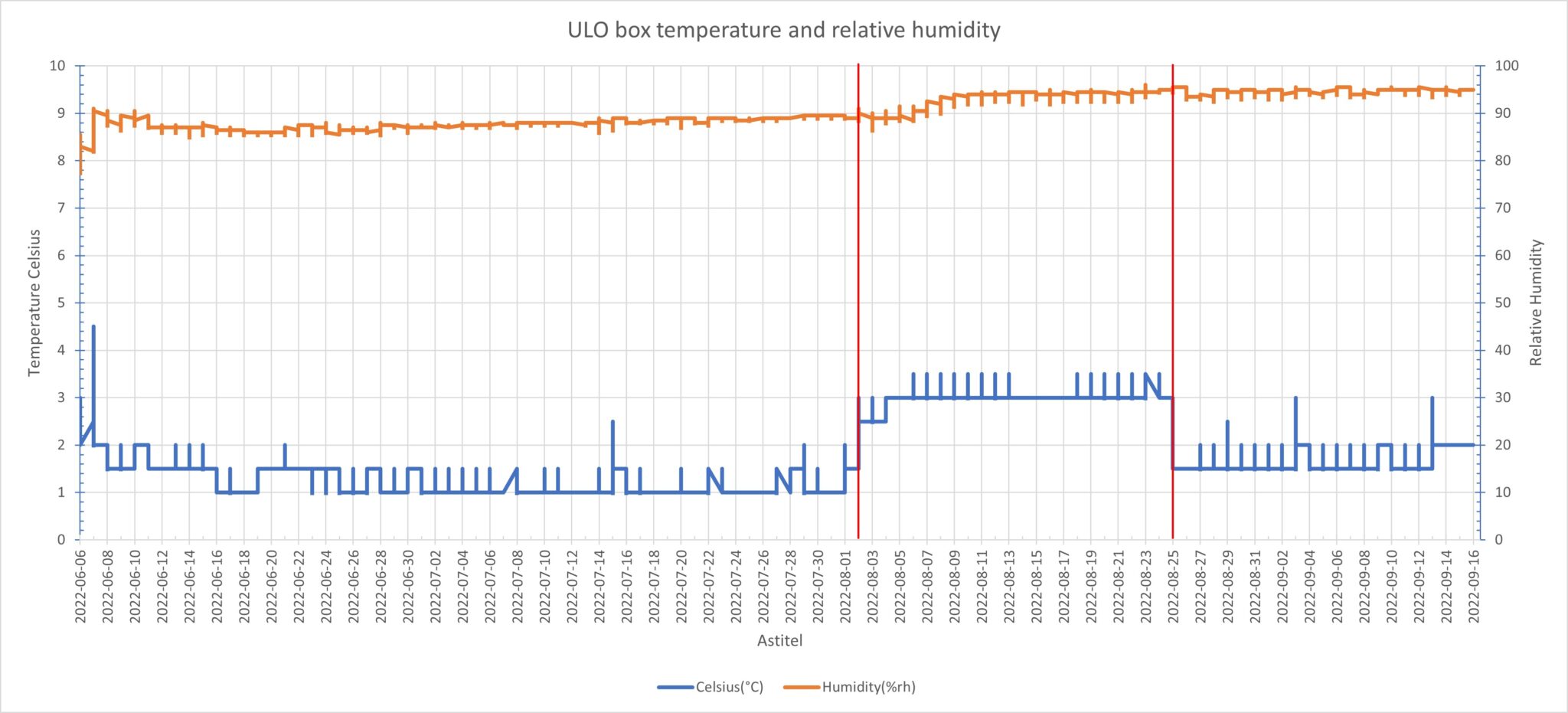Some footage from the past Heze Peony Festival in China:
khurtekant posted in the group Species Peonies International Network (SPIN)
Almost there, the first one to flower here (perhaps P. clusii would be earlier, but that one didn’t survive again): P. kesrouanensis. Blooms well before the leaflets are fully developed, I suppose in very cold weather (or high up the mountains in deeper shade) it may postpone this blooming somewhat until the leaflets are more mature. I did have a…Read More
khurtekant wrote a new post
1 Commentkhurtekant posted in the group Species Peonies International Network (SPIN)
Next to our daily work we have two things we’d like to do soon on this site. First one is to compile a new list of growers of species plants and compare those to the ones that have been requested. Then we can see what is possible or not. One question to ask there is whether it would be wise to send directly from the supplier to the receiver or…Read More
khurtekant wrote a new post
5 CommentsI am wondering if instead of the temperature being set at 0.3c that you could just slightly increase the temperature and see if the grey spots disappear. Not as drastic as in this report. The grey spots could be from being too cold and be something like freezer burn. BTW I am a complete novice at storing peonies but for some reason this came to my mind as I read the article.
Thank you for your comment. Perhaps you are right, this hadn’t come to my mind. The first year I tried the experiment there were no grey spots and the temperature was slightly higher. The problem however was that the buds developed further and they were thus more ‘open’ at the end of the experiment. If it would solve the problem, that would be worth considering of course. But I decreased the temperature further the last years just to avoid them opening further. The end goal is a cut flower of course and florists want them as closed as possible, although they surely want them to open of course. There have been some experiments with storage at sub zero temperatures even and they claimed to be successful. I do wonder however why then my first box would have been good, they were all stored at the same temperature, the only difference is the duration. But you are probably right, I should try it as well. I guess I can place a box in another cold storage at a higher temperature.
I’ve really enjoyed reading all of these yearly reports. Thanks both for all of the hard work you’ve put into these experiments, and sharing the results with all of us. I hope you have great success this year. Another thought that goes along with what Carol commented earlier, what about trying a cryoprotectant and keeping the temperature as low, or even lower instead? I wonder what would happen if you fogged the peonies with a cryoprotectant and then stored them below freezing? Or what about if you store them just above freezing and fog them with a mix of cryoprotectant and fungicide?
Thank you for your comment. I didn’t know cryoprotectants existed, I might have a look at that in the future, but fogging them seems like an extra task and is perhaps not very easy to do. The research station has stopped work on this, project money ran out. I’ve filled two boxes this year, but I’ll only know the results in August or September obviously. I couldn’t really fill more of them as there was lots of botrytis in the field this year due to the bad weather this Spring. If peonies go into the boxes with botrytis, you cannot expect them to come out of it healthy… With only two boxes, not too many tests can be done, so I’ve opted for ‘slowly’ decreasing oxygen instead of fast as that could be one of the causes of the ‘grey flecks’. And I also won’t go as deep, I want to keep it around or slightly above 5%. I’ve mostly used Coral Charm this time as this variety was resistant to bud botrytis (most botrytis in the field occurred at the bottom of the buds) and because it is a variety which can be cut tight and still opens fine (and much slower than its sister Coral Sunset). I’ll post a article about it somewhere in the Autumn, I hope I can report some good results this time.-
The article “Peonies of Turkey” has been updated to include some remarks by two Turkish scientists and several additional images have been added as well. I think it is now a whole lot better. Thank you to Halbay Turumtay and Cemal Sandalli for the extra information.
Nothing much happening when it comes to peonies currently. So to bridge the time until there’s more to tell, here are some images of last season’s OFF-4, a plant from Hans Maschke. A cross between Old Faithful and Coral Charm, thus with some interesting genetics. Can have all flower forms as can be seen from the image. Late flowering, very sturdy…Read More
khurtekant posted in the group Species Peonies International Network (SPIN)
These are some open pollinated seedlings from Lagodekhi Sunrise, a selection from those lagodechiana hybrids (mloko x caucasica), a natural hybrid which you’ll find in Georgia. They naturally grow in shade, but my seedlings are in full sun. This shows on the leaflets, they are turning into all kinds of colours. I quite like it in fact.
13 Comments:o So close! Did not know it grew in my Motherland. What DOES not grow in the Caucasus? I will look these up. Turkey’s Black Sea climate might accommodate them.
I can see you’re from Turkey. It has probably the most diverse natural collection of peony species of any country. P. peregrina, P. turcica, P. kesrouanensis, P. mascula ssp mascula, P. mascula ssp bodurii, P. arietina, P. tenuifolia, P. daurica ssp daurica, P. daurica ssp macrophylla, P. arietina ssp arasicola and P. x kayae (a hybrid). Perhaps…Read More
I am from the Caucasus, but I live in Turkey. I am stunned that Anatolia contains so, so many varieties. I will look them up, and, hopefully find and photograph them, even if others have done it before. A local Peony Pilgrimage, if you will, before I go to China and Japan. I am watching CGTN’s documentary The Peony 1-4, and my heart has fallen. I…Read More
This is probably the best article on peonies in Turkey, listing 11 (sub-)species in 54 locations in Turkey. It’s in Turkish but I suppose that will not be a problem for you.
Oh well, that’s very friendly, thank you. But I’ve run it through Google translate. The translation is very basic and it does happen that some sentences are rather incomprehensible, but it’s good enough to understand the main part. A translation from you would of course be far better, but I think the time needed to translate such a long article…Read More
Well, you surely can. Here’s a map showing where you can find wild peonies in Turkey. There are probably listings with more precise locations, but I’m sure if you look somewhat you can find them. Some people sometimes post images of wild Turkish peonies on facebook, you might have a look there as well and perhaps ask the photographers where they…Read More
Try joining this group on facebook and look for some images of Paeonia turcica, paeonia arietina, paeonia kesrouanensis and paeonia arietina arasicola. There have been images posted of those from Turkey in the last two years at least.
As much as I appreciate your assistance, I have a deep-rooted aversion to fB since the day they said, ‘We have discovered that you use your fb password on other sites’ back in 2008. I will never join them unless for commercial purposes. I will see what information I can get without joining fb. Much, much appreciated. I love peonies almost as much…Read More
Not that only species peonies grow in Turkey, here’s an instagram account of a commercial peony cut flower farm:
https://www.instagram.com/kesme_sakayik/
khurtekant wrote a new post
2 CommentsInteresting to see your results, and to see that you’ve gotten germination so quickly ! I’d be interested in knowing what your temperature routine was, and if you used this year’s seeds ?
I have my ways of doing it, but I can’t say that I’ve done as much experimenting as I should. I get results, so I’m happy, but since I’m getting something…I’m probably afraid to do too much experimenting out of fear I’ll get nothing.
And what about all those cracked seeds ? I get them with some crosses, but not others. ‘Laddie’ seems to be the worst offender here – some years a large percentage of seeds will be ruptured, while other years most of them look fine. In the past I used to think that it had to do with widely varying amounts of soil moisture, which may still be the case. But different pollens seem to produce different results too.
My sense is that when we get brown tips on the end of the roots, it’s from too much moisture or a lack of air ?
I’ve come to where I now give all of my seeds, fresh or not, several days of soaking prior to putting them in the bags. And will give them a bleach solution rinse before I bag them too. My sense is that if I’ve soaked my seeds well before I bag them, then all that’s really needed in the bags is an atmosphere that can maintain 100% humidity. I use fairly coarse vermiculite rather than the very fine stuff, but that’s just a matter of preference, along with what happens to be in the big 4 cubic foot bag that I buy every few years.
One other thing about vermiculite – it does a good job of showing you which seeds are rotting, by the manner that it sticks to rotting seeds.
In any case, good for you for doing these sorts of experiments. I suspect others may be like myself – we do something that seems to provide us (for better or worse) with results, and then we tend to stop experimenting.
@bobjohnson Yes, this year’s seeds. But they were mature halfway August, earlier than yours. Then soaked for two days and then all the different treatments. The bags were placed in my unheated greenhouse. I should have logged the temperatures perhaps, but I didn’t (I’ll do that next year). The greenhouse vents are set to keep temperatures around 21-23°C (68°-74°F), although temperatures may have risen above this at times. There was no heating however, so temperatures during night will have gone down quite a bit as well. Last year I did the same treatment, but temperatures were not as high then and rooting occurred later, although here as well I don’t remember exactly when.
I am not sure about the exact treatment as well. I did receive some seeds later in the season and hesitated what to do with them. Place them in the greenhouse as well, although with decreasing temperatures they may not receive a long enough warm treatment. Or place them inside in a room where I can give additional heating? I’ve split them, but as it’s only a few seeds, I doubt much can be concluded from it if I would get some roots.
What I also wonder about: in the greenhouse they actually receive both warm and cold during the ‘warm period’. That’s more like will happen in nature of course. I have noticed that some of the seeds already had a plumule growing. So those must already have received their required cold period as well. Perhaps it’s thus possible to give both warm and cold period at the same time? Which is not necessarily very beneficial of course, I cannot plant them outside as they risk being frozen resulting in early death. And for some I do think outside planting after the first roots might be better, in pots there is always more risk of loss is my experience.
But what I reallly wanted to say: what would be best? Continuous warm temperature (as you would have inside) or alternating warm/cold temperatures, with probably the warm daily temperatures rather warm enough and for a long enough time? There sure is some more experimenting to do. But it will be for next year… I didn’t really mind all the failed germinations from Just Peachy. If not for this experiment I would never have collected the seeds at all.
I think the brown tips at the growing point of the roots are from too much moisture. If it were lack of air, I’d expect it to see at random throughout the experiment, which wasn’t the case, it deteriorated with increasing moisture levels.
The ruptured seeds I threw away weren’t necessarily bad, but I wanted to rule out the possibility that they would influence the results if they germinated less well or otherwise compared to ‘normal seeds’.
- Load More Posts



































This tugs at my heartstrings, and touches the root of the root of my people.
I always knew my homeland was rich with resources, but this requires a decent, thorough reading session.
Life is taking me in new directions, but I will hold to the course, and make time for this journey.
I intend to undertake a Peony Pilgrimage one day. Go up, see them in the wild, wherever I can find them, be it in Anatolia or the Caucasus.
Oh, and I definitely dream of Luoyang.